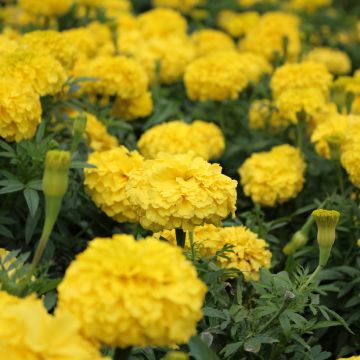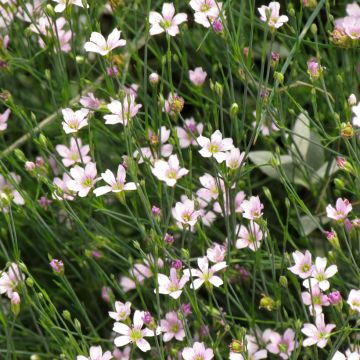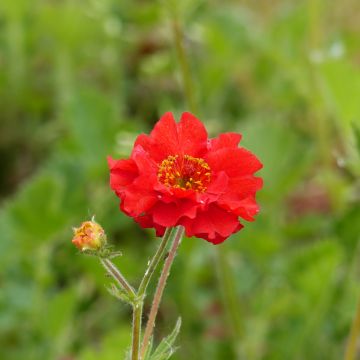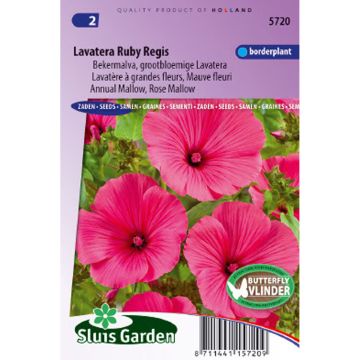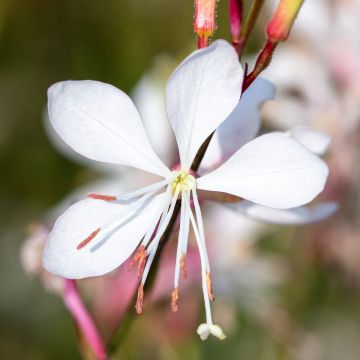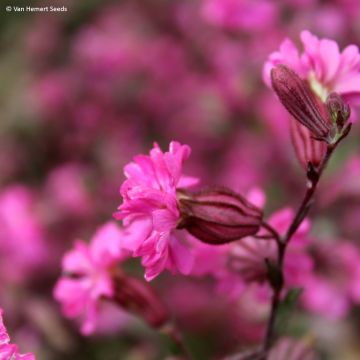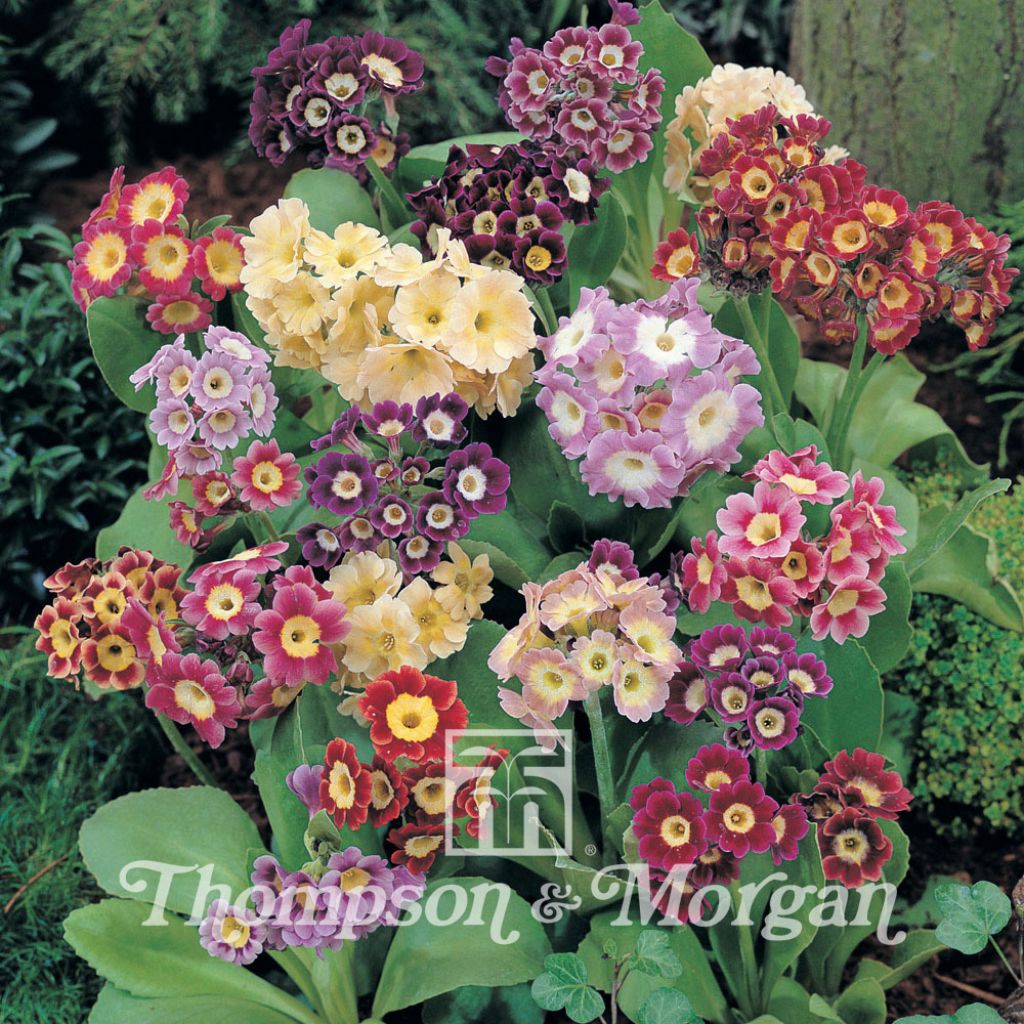

Auricula Douglas Prize Mix
Primula auricula Douglas Prize Mix
Primula auricula Douglas Prize Mix
Bear's Ear, Mountain Cowslip, Bear's Ear Primrose
I'm looking forward to seeing the growth.
Thérèse M., 10/03/2018
This plant carries a 6 months recovery warranty
More information
We guarantee the quality of our plants for a full growing cycle, and will replace at our expense any plant that fails to recover under normal climatic and planting conditions.
Seed-only orders are dispatched by sealed envelope. The delivery charge for seed-only orders is €3.90.

Does this plant fit my garden?
Set up your Plantfit profile →
Description
The Auricula primrose or Bear's Ear is a perennial plant native to the Alps, cultivated since the 16th century and even the subject of a true passion among some collectors during the 19th century in Liège (Belgium). The numerous hybridisations carried out by these knowledgeable enthusiasts have multiplied the colours and sometimes even the flower shapes. It had become common for these enthusiasts to display their collection of Primula auricula in front of their homes on 4 or 5-level shelves called "Auricula theatres".
The mixed Bear's Ear primroses offered here are a selection of homogeneously shaped plants bearing the official name of Primula auricula Douglas Prize Mix.
The evergreen leaves measuring 6 to 12 cm (2 to 5in), arranged in a rosette, are spatulate and rounded, pale green or greyish due to a light layer of white bloom that sometimes covers them.
From this rosette of leaves emerges in March an upright stem measuring 10 to 15 cm (4 to 6in), bearing an umbel of 10 to 30 bicoloured flowers. The flowers, 1.5 to 2.5 cm (1in) in diameter, in the shape of a flat cup, have a yellow centre surrounded by a secondary colour, typically with a velvety appearance. The colours are numerous: pink, carmine red, brown, black, violet, orange, coral, etc.
The flowering, slightly fragrant, occurs from March to May.
The Bear's Ear primroses prefer a shaded location but will tolerate a sunny spot if the soil is rich and moist. Their small size (20-25 cm (8-10in) in height and width) allows for multiple uses: in groups, they are lovely in shaded beds and rockeries; in smaller numbers, they can be planted in pots or containers where they will showcase their astonishing colours.
Report an error about the product description
Flowering
Foliage
Plant habit
Botanical data
Primula
auricula
Douglas Prize Mix
Primulaceae
Bear's Ear, Mountain Cowslip, Bear's Ear Primrose
Alps
Other Thompson and Morgan seeds
Planting and care
Sow the Primrose Bear's Ear from March to July in a seed tray. Use a good quality compost that you will sift on the surface to bind the seed to its substrate. Before sowing, lightly press the compost with a plank. Sow your seeds by broadcasting. Do not cover the seeds. Water generously with a fine rain. Place your seed tray in a well-lit area, without direct sunlight, at a temperature of 15°C (59°F) to 18°C (64.4°F). A temperature higher than 18°C (64.4°F) could inhibit germination.
The seeds will take 10 to 30 days to germinate. Once most seeds have sprouted, sprinkle a small amount of sifted compost or vermiculite on the roots to anchor them.
When the plants are manageable, transplant them into 7cm (3in) buckets. Keep the compost moist but not excessively during growth. Then, 15 days before their final planting, start gradually acclimating them to a temperature of 15°C (59°F).
By the end of May or early June, the garden's temperature will be warm enough to plant your young plants. Choose a shaded location. Add a good shovel of compost to each planting hole. Space your plants 20 cm (8in) apart.
Regularly remove faded flowers to maintain beauty and promote repeat flowering.
Sowing period
Intended location
-
, onOrder confirmed
Reply from on Promesse de fleurs
Flower seeds
Haven't found what you were looking for?
Hardiness is the lowest winter temperature a plant can endure without suffering serious damage or even dying. However, hardiness is affected by location (a sheltered area, such as a patio), protection (winter cover) and soil type (hardiness is improved by well-drained soil).

Photo Sharing Terms & Conditions
In order to encourage gardeners to interact and share their experiences, Promesse de fleurs offers various media enabling content to be uploaded onto its Site - in particular via the ‘Photo sharing’ module.
The User agrees to refrain from:
- Posting any content that is illegal, prejudicial, insulting, racist, inciteful to hatred, revisionist, contrary to public decency, that infringes on privacy or on the privacy rights of third parties, in particular the publicity rights of persons and goods, intellectual property rights, or the right to privacy.
- Submitting content on behalf of a third party;
- Impersonate the identity of a third party and/or publish any personal information about a third party;
In general, the User undertakes to refrain from any unethical behaviour.
All Content (in particular text, comments, files, images, photos, videos, creative works, etc.), which may be subject to property or intellectual property rights, image or other private rights, shall remain the property of the User, subject to the limited rights granted by the terms of the licence granted by Promesse de fleurs as stated below. Users are at liberty to publish or not to publish such Content on the Site, notably via the ‘Photo Sharing’ facility, and accept that this Content shall be made public and freely accessible, notably on the Internet.
Users further acknowledge, undertake to have ,and guarantee that they hold all necessary rights and permissions to publish such material on the Site, in particular with regard to the legislation in force pertaining to any privacy, property, intellectual property, image, or contractual rights, or rights of any other nature. By publishing such Content on the Site, Users acknowledge accepting full liability as publishers of the Content within the meaning of the law, and grant Promesse de fleurs, free of charge, an inclusive, worldwide licence for the said Content for the entire duration of its publication, including all reproduction, representation, up/downloading, displaying, performing, transmission, and storage rights.
Users also grant permission for their name to be linked to the Content and accept that this link may not always be made available.
By engaging in posting material, Users consent to their Content becoming automatically accessible on the Internet, in particular on other sites and/or blogs and/or web pages of the Promesse de fleurs site, including in particular social pages and the Promesse de fleurs catalogue.
Users may secure the removal of entrusted content free of charge by issuing a simple request via our contact form.
The flowering period indicated on our website applies to countries and regions located in USDA zone 8 (France, the United Kingdom, Ireland, the Netherlands, etc.)
It will vary according to where you live:
- In zones 9 to 10 (Italy, Spain, Greece, etc.), flowering will occur about 2 to 4 weeks earlier.
- In zones 6 to 7 (Germany, Poland, Slovenia, and lower mountainous regions), flowering will be delayed by 2 to 3 weeks.
- In zone 5 (Central Europe, Scandinavia), blooming will be delayed by 3 to 5 weeks.
In temperate climates, pruning of spring-flowering shrubs (forsythia, spireas, etc.) should be done just after flowering.
Pruning of summer-flowering shrubs (Indian Lilac, Perovskia, etc.) can be done in winter or spring.
In cold regions as well as with frost-sensitive plants, avoid pruning too early when severe frosts may still occur.
The planting period indicated on our website applies to countries and regions located in USDA zone 8 (France, United Kingdom, Ireland, Netherlands).
It will vary according to where you live:
- In Mediterranean zones (Marseille, Madrid, Milan, etc.), autumn and winter are the best planting periods.
- In continental zones (Strasbourg, Munich, Vienna, etc.), delay planting by 2 to 3 weeks in spring and bring it forward by 2 to 4 weeks in autumn.
- In mountainous regions (the Alps, Pyrenees, Carpathians, etc.), it is best to plant in late spring (May-June) or late summer (August-September).
The harvesting period indicated on our website applies to countries and regions in USDA zone 8 (France, England, Ireland, the Netherlands).
In colder areas (Scandinavia, Poland, Austria...) fruit and vegetable harvests are likely to be delayed by 3-4 weeks.
In warmer areas (Italy, Spain, Greece, etc.), harvesting will probably take place earlier, depending on weather conditions.
The sowing periods indicated on our website apply to countries and regions within USDA Zone 8 (France, UK, Ireland, Netherlands).
In colder areas (Scandinavia, Poland, Austria...), delay any outdoor sowing by 3-4 weeks, or sow under glass.
In warmer climes (Italy, Spain, Greece, etc.), bring outdoor sowing forward by a few weeks.






































